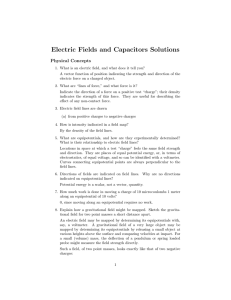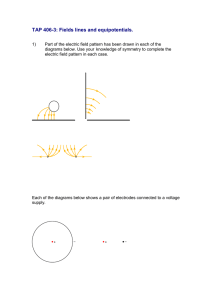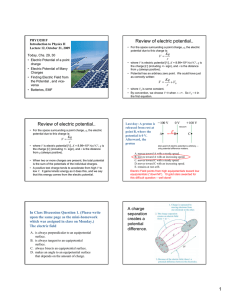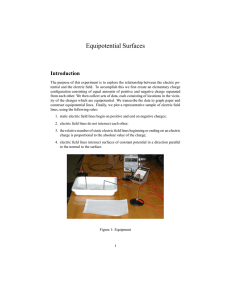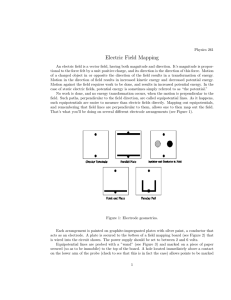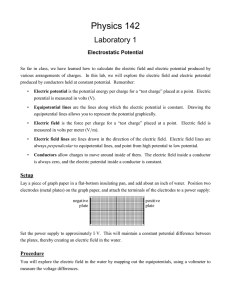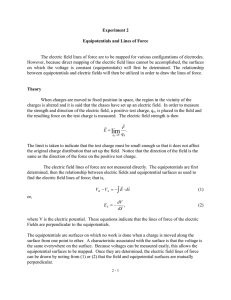Electric Fields Lab Report: Equipotential Lines & Charge Distributions
advertisement
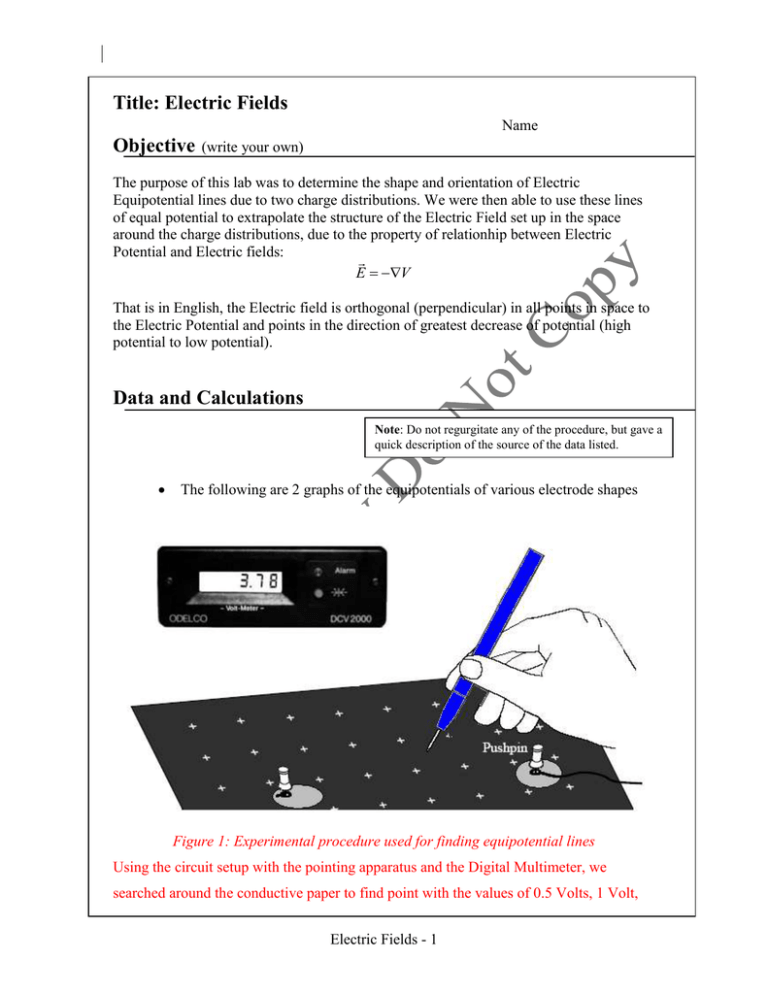
Title: Electric Fields Name Objective (write your own) The purpose of this lab was to determine the shape and orientation of Electric Equipotential lines due to two charge distributions. We were then able to use these lines of equal potential to extrapolate the structure of the Electric Field set up in the space around the charge distributions, due to the property of relationhip between Electric Potential and Electric fields: E V That is in English, the Electric field is orthogonal (perpendicular) in all points in space to the Electric Potential and points in the direction of greatest decrease of potential (high potential to low potential). Data and Calculations Note: Do not regurgitate any of the procedure, but gave a quick description of the source of the data listed. The following are 2 graphs of the equipotentials of various electrode shapes Figure 1: Experimental procedure used for finding equipotential lines Using the circuit setup with the pointing apparatus and the Digital Multimeter, we searched around the conductive paper to find point with the values of 0.5 Volts, 1 Volt, Electric Fields - 1 1.5 Volts, etc… After finding those points we connected the lines together to represent lines of equal voltage (equipotential). After those were drawn, we found lines perpendicular to the equipotential lines – and connected those dots to draw the electric field lines – adding the direction from highest potential down to lowest potential. Using the properties of electric field lines, the properties of equipotentials, and properties of conductors listed in the Background Information section above, draw in the electric field lines on the same two sheets as the equipotentials. Figure 2: Electric Field and Electric Equipotential Lines for a Dipole Charge distribution (Note that the positive charge is on the Left and the negative charge is on the Right) Electric Fields - 2 Figure 3: Electric Field and Electric Equipotential Lines for a Parallel Plate Charge Distribution (Note that the positive charge is on the Left and the negative charge is on the Right) Results and Questions Repeat the key experimental results. Go back through the procedure and look for questions. See the document “Lab Write up Guidelines” for additional information on how to write your lab report. Discuss the results of each of the two cases in terms of the properties of electric field lines, the properties of equipotentials, and properties of conductors listed in the Background Information section above. How do the shapes of the various electrodes affect the shape of the electric fields? Be brief but complete with your descriptions. The Electric field was directly affected by the shape of the charges. The longer parallel plates set up a nearly parallel field in the center region between the plates. Regardless the Electric Fields - 3 further away from the charges, the more standard the Electric Field became. This seems to imply that sufficiently far enough away from charges; the field will look like a point charge or a dipole – based upon the relative orientation of the charges. Conclusion (you know what to do here by now) You write the details. Include your answer here. Use complete sentences!!!! ** NOTE: There are several components of error which could significantly modify the results of this experiment. Some of these are listed below: Age Humidity Bad power supply (recall we used the DMM to attempt to alleviate this problem.) Holes in the Conductive Sheet Circuit construction Insulation ?? It is recommended that you take these and explain the “why” part of each for your results and conclusions sections – and possibly what could have been done (if anything) to minimize the effects of these errors. Electric Fields - 4

